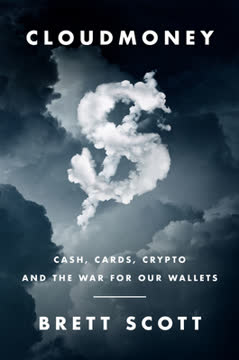Key Takeaways
1. The Grand Merger: Big Finance and Big Tech are Fusing
The merger is between the forces of Big Finance and those of Big Tech. The acquisition is of power: once the merger is complete, Big Finance and Big Tech will have power over us on a scale never before seen in human history.
A new super-system. The author argues that a profound, unprecedented merger is underway between the titans of finance and technology. This isn't just about collaboration; it's about a fundamental fusion that creates a planetary-scale super-system. This new entity seeks to acquire immense power over individuals, driven by the automation of global finance and the replacement of physical money with digital "cloudmoney."
Automating capitalism. This merger enables the full automation of corporate capitalism, as seen in the operations of giants like Amazon, Uber, Google, Tencent, and Alibaba. These tech firms are actively partnering with financial institutions because global digital empires cannot exist without seamlessly integrated global digital payment systems. This creates major oligopolies, often concealed behind a proliferation of apps that give a superficial appearance of diversity, but which ultimately lock billions into interconnected systems of control.
Unimaginable control. The resulting infrastructure of automated financial control allows for unprecedented levels of surveillance and data extraction. This brings with it grave new potentials for exclusion, manipulation, and delusion, as billions of people become dependent on systems that monitor and steer their behavior. This isn't merely a technological shift; it's a geopolitical struggle between major powers and their corporate allies to dominate this emerging digital landscape.
2. Cash: The Glitch in the Global Digital Machine
Cash protects privacy, and it is resilient in the face of both natural disasters and banking failures, but it is increasingly being presented as an outdated barrier to progress, and one which must inevitably give way to a new world of digital money, or what I call ‘cloudmoney’.
The last mile of payment. Cash represents a crucial "glitch" in the otherwise seamless digital flow desired by corporate capitalism. While mega-corporations use digital bank transfers for their large-scale operations, they have historically relied on physical cash for the "last mile" of payment—transactions with individual workers or small, informal businesses. This physical, peer-to-peer interaction hampers the drive for full automation and data capture.
Privacy and resilience. Unlike digital payments, cash leaves no data trail, creating "data black holes" that prevent surveillance. It also offers resilience, functioning offline during power outages, natural disasters, or banking crises. This makes cash a vital tool for those who distrust formal institutions or live in precarious conditions, offering a degree of autonomy from centralized control.
An inconvenient truth. To the financial and corporate establishment, cash is a necessary evil that completes the profit cycle but blocks their attempts to automate systems, spy on customers, and discipline people through threats of exclusion. It prevents an enormous amount of valuable data from falling into corporate hands. Therefore, cash is increasingly demonized as an outdated barrier to progress, rather than recognized for its unique benefits.
3. Cloudmoney: Understanding the Dual Nature of Digital Money
The digital money in our bank accounts resides in distant datacentres controlled by the banking sector, which we communicate with via our phones, computers or payment cards.
Casino vs. cloakroom. Many people mistakenly believe their bank accounts "store" cash, like a cloakroom. However, the author clarifies that banks operate more like casinos: when you deposit cash, the bank takes ownership of it and, in return, issues you "digital chips" – its own form of money, or IOUs. These digital chips are recorded in the bank's private database, not as stored cash.
Bank-issued promises. These "digital chips" are bank-issued promises for state money, not state money itself. When you use a debit card, you're not moving cash; you're initiating a request for your bank to edit its database, reassigning its digital chips from your account to another. This "movement" is merely promise-editing within the bank's centralized system.
Credit creation. Banks possess a unique power: they can issue digital chips (create money) far in excess of the state money they hold. This "credit creation of bank-money" expands the money supply, with over 90% of the UK's money supply existing as these bank chips. This system, which the author calls "cloudmoney," is invisible, distant, and entirely under the control of financial institutions, laying the foundation for unprecedented corporate power.
4. The War on Cash: A Coordinated Campaign, Not Organic Progress
The digital payments industry, however, makes sure never to highlight the dangers of this. Rather, to make incursions into face-to-face commerce, it showcases the surface-level ‘feel’ of digital payments – their slickness or apparent convenience – rather than drawing attention to the deeper structures that underpin them.
Engineered consent. The shift away from cash is often presented as "natural progress" driven by consumer demand for convenience. However, the author reveals a coordinated "war on cash" waged by powerful entities:
- Banking sector: Sees cash operations as a cost, digital payments as profit centers, and data as a valuable asset for profiling and cross-selling.
- Payments companies (Visa, Mastercard): Directly profit from transaction fees, actively demonize cash (e.g., "Cashfree and Proud" campaigns), and promote digital payments as safer, cleaner, and higher status.
- Fintech industry: Relies on digital payments for its automated financial services, viewing cash as a "bug" that hinders innovation.
- States and central banks: Desire transaction surveillance for tax and security, and monetary policy control (e.g., negative interest rates). Some implement "cash thresholds" or "demonetizations" (like India's 2016 shock).
Aesop's paradox. States, in their efforts to combat tax evasion or crime, often partner with the digital payments industry. This alliance, however, can leave states inextricably bound to their new "partners," who gain immense power. The author likens this to Aesop's fable of the horse and the stag, where the horse gains a saddle and bit from the hunter, only to remain subservient.
Self-fulfilling prophecy. Banks actively engineer a self-fulfilling prophecy by quietly shutting down ATMs and branches, making cash harder to access and spend. This inconvenience pushes more people towards digital systems, which then justifies further erosion of cash infrastructure. This top-down initiative, disguised as bottom-up consumer choice, is rapidly succeeding in creating a "bank chip society."
5. Digital Payments: Enabling Surveillance, Censorship, and Control
If things you buy can affect everything from your credit score to your insurance premium to your ranking as a good citizen, it will affect the psychology of your spending, and make you self-conscious.
The data goldmine. Digital payments generate an intimate, fine-grained record of our lives—who transfers what to whom, where, and when. This data offers deep insights into our priorities, habits, and beliefs, far beyond what social media or search patterns reveal. For any entity seeking to build predictive systems about human behavior, payments data is a "goldmine."
Primary and secondary watchers. Financial institutions (banks, card networks, PayPal) are primary watchers, collecting vast amounts of data and sharing it with hundreds of organizations, including data brokers like Acxiom and Oracle. States are secondary watchers, requesting access for tax monitoring, law enforcement (e.g., USA PATRIOT Act, FinCEN's Suspicious Activity Reports), and even intelligence agencies (e.g., NSA's "Follow the Money" program).
Big Brother, Bouncer, and Butler. This surveillance capability manifests in three archetypes:
- Big Brother: Mass monitoring by companies and states (e.g., China's Social Credit System, welfare recipient surveillance).
- Big Bouncer: Using data for access control, such as automated credit-rating and fraud detection systems that can blacklist individuals from economic participation.
- Big Butler: Corporations using data to profile and "nudge" customer behavior, steering them towards specific products or spending patterns, often creating self-reinforcing feedback loops.
The panopticon effect. The mere awareness that private actions could be subject to secret monitoring dampens one's spirit and leads to self-censorship. As digital payments become ubiquitous, this panopticon effect can permeate daily life, making individuals self-conscious about how their spending might affect their credit score, insurance premiums, or social ranking.
6. The Illusion of Inevitable Progress: How Choice is Engineered
To ask, therefore, whether people desire new digital payments systems largely misses the point. Maybe you do enjoy running fast on the economic treadmill, but those who do not will have to run regardless.
Capitalism's expansion imperative. The feeling that digital payments are "inevitable" stems from a fundamental truth of capitalism: it requires constant expansion to avoid breakdown. This translates into a relentless push for speed, automation, connectivity, and convenience. Anything slower, non-automated, or non-connected, like cash, is cast aside as a "restrictive skin" that needs shedding.
Inertia as "choice." While mainstream economics emphasizes individual choice, the author argues that people are often pulled along by powerful collective forces. Like wearing a suit to work, adopting digital payments can be a passive act of conforming to cultural conventions and systemic inertia, rather than an active, informed choice. Oligopolies act as "menu-setters," subtly guiding consumer preferences.
The "gentrification of payments." This process is akin to gentrification, where informal, direct, peer-to-peer economic relationships are replaced by institutionally mediated ones. Global cities set trends that ripple down to smaller towns and poorer countries, where digital payment systems displace cash economies. "Financial inclusion" often means absorbing marginalized populations into large-scale corporate systems, rather than empowering existing informal structures.
The treadmill effect. The constant messaging of a "rapidly changing world" creates anxiety and pressure to "keep up." Those who resist, like elderly shopkeepers or traditional merchants, are framed as "Luddites" or "out of sync." This narrative, reinforced by marketing and government initiatives (like USAID's "Cashless Catalyst"), ensures that individuals feel compelled to adopt digital payments, regardless of their genuine desire or the long-term consequences.
7. Fintech: Re-skinning Big Finance, Not Revolutionizing It
Many of these fintechs have about as much chance of disrupting finance as an IOS developer has of disrupting Apple, and they cannot wrench the monetary system away from banks any more than an app company can take control of the iPhone.
The illusion of disruption. Fintech companies initially presented themselves as "disruptors" of traditional finance, promising to democratize access and challenge the power of old banks through Silicon Valley-style apps and interfaces. This narrative, fueled by venture capital and media hype, suggested a revolutionary uprising against the financial establishment.
Symbiotic partnership. In reality, fintechs rarely bypass the existing financial system; instead, they plug into it. They build their budgeting tools, savings platforms, and payment apps on the underlying infrastructure controlled by major banks and payment firms. This creates a symbiotic relationship where fintechs serve as new "storefronts" or "channels" that funnel customers into the core banking "operating system."
Automation, not revolution. Banks, initially slow to adopt digital interfaces due to their complex legacy systems and diverse priorities, now actively acquire or partner with successful fintechs. This allows them to automate customer interactions, cut costs, standardize processes, and gain direct control over customer options and data. The "digital transformation" is about shedding costly human-centric services (like branches) in favor of efficient, data-rich self-service apps and chatbots.
The new corporate personhood. This re-skinning extends to giving automation a personality, with chatbots like Bank of America's "Erica" using first-person pronouns and mimicking human interaction. This quest for efficiency, speed, and scale, however, leads to a loss of human empathy and diversity in financial services. The fusion of Big Finance and Big Tech creates a seamless, automated ecosystem where our interactions are increasingly mediated by machines, not people.
8. The Rise of the Robo-Banker: Automating Financial Decisions
The highest reaches of skyscrapers are occupied by very few people, but they operate at the largest scale.
From human to algorithm. Historically, bankers made decisions based on observation, networks, and intuition, like a "Sherlock Holmes" of finance. However, the drive for efficiency and scale has led to the automation of these decision-making processes. Investment banks like Goldman Sachs have drastically reduced human traders, replacing them with electronic trading platforms and algorithms.
AI as a problem-solver. The next evolution is machine learning and Artificial Intelligence (AI). Instead of following fixed recipes, AI systems "learn" from vast datasets of past financial interactions to identify patterns and make predictions. Companies like Palantir, born from PayPal's fraud detection, apply these models to both national security and major financial corporations, sifting through petabytes of data far beyond human capacity.
Automating bias and control. While AI promises efficiency, it carries risks:
- Incompetence and bias: AI systems can be imprecise, mis-categorizing individuals (e.g., Twitter's "working-class mom" example) or encoding historical biases from skewed training data (e.g., higher loan denial rates for black people).
- Unaccountability: Unlike human decisions, AI's "why" is often opaque, making it difficult to challenge.
- Surveillance for inclusion: "Financial inclusion" initiatives use AI to build "unorthodox intel" on "thin-file" clients by analyzing phone usage, social media, and psychometric data (e.g., Lenddo, Tala, Neener Analytics).
Big Bouncer and Big Butler, amplified. AI amplifies the functions of Big Bouncer (automated access control, potentially blacklisting individuals from the economy) and Big Butler (steering behavior through personalized offers and dynamic pricing). This creates "enclosed aviaries" where micro-monitored customers are induced to change their financial behavior, leading to a panopticon effect where every financial action is scrutinized and potentially used against them.
9. Blockchain and Crypto: A Troubled Rebellion Against Centralization
Bitcoin is best understood as an attempt to provide an alternative to both of those features, by attacking both the centralisation of that system, and its changeability.
A two-pronged attack. Bitcoin emerged in 2008 as a cypherpunk response to centralized banking, aiming to create a system for moving digital tokens without bank involvement. It launched a two-pronged attack:
- Decentralization: Allowing strangers to collectively coordinate and verify token movements without a central authority.
- Fixed supply: A predetermined, unchangeable supply of tokens (21 million for Bitcoin), contrasting with the changeable, bank-issued money supply.
Digital gold vs. digital cash. Early Bitcoin enthusiasts, often libertarians, saw it as "digital gold" – a scarce, commodity-like asset backed by mathematics and energy-intensive "proof-of-work" mining. This appealed to monetary conservatives. However, the claim that it was "digital cash" for everyday commerce quickly clashed with its volatility and limited transaction capacity, leading to internal "forks" like Bitcoin Cash.
The cult of the blank token. Bitcoin tokens are essentially numbered digital objects recorded on a distributed, synchronized timeline (blockchain). Unlike bank-issued IOUs, these numbers don't represent a liability or a promise for something else; they are the object itself. The community, however, projects a "digital commodity" mythology onto these numbers, reinforced by metallic "coin" branding, making them feel like limited-edition collectibles.
Countertrade, not currency. Despite the "cryptocurrency" label, Bitcoin primarily functions as a countertradeable collectible. People swap it for money-priced goods, with its value constantly fluctuating against fiat currencies. This means it piggybacks on the existing monetary system rather than replacing it. While offering a potential alternative for "grey areas," its volatility makes it impractical as a stable medium of exchange.
10. Raiding the Raiders: Corporate Co-option of Crypto's Promise
Big corporates can raid and repurpose the technological scaffolding of blockchain technology to coordinate their cartels, syndicates and oligopolies.
Pacification of the pirates. What began as a counter-cultural movement against centralized power has seen its core technology, blockchain, co-opted by the very institutions it sought to disrupt. Financial institutions and mega-corporations, recognizing the potential for profit and efficiency, have begun "raiding" crypto's innovations.
Automating oligopolies. Banks, operating as semi-centralized oligopolies, found blockchain's ability to sync separate systems into unity highly appealing. "Private blockchains" or "distributed ledger technology" (DLT) are now used to automate back-office interbank coordination, streamlining processes like securitization and syndicated loans. This is the next step in banking automation, focusing on cooperation between institutions rather than just within them.
Hybridization and blurred lines. This corporate incursion has led to a complex, fragmented landscape where the lines between "disruptor" and "incumbent" are blurred. Crypto developers moonlight as consultants for banks, and major crypto platforms like Coinbase are listed on traditional stock exchanges. This creates ambiguous zones of hybridization, where the original anti-establishment ethos is diluted by commercial interests.
Stablecoins: Crypto's Trojan Horse. The most significant co-option is the rise of "stablecoins." These crypto-tokens, like Tether or USD Coin, are designed to maintain a stable value by being "tethered" or "pegged" to fiat currencies (typically the US dollar). They function as third-tier digital chips, promises for bank dollars issued on a blockchain. While offering a more stable "digital cash" alternative than Bitcoin, they remain fundamentally dependent on the traditional banking system, making them a perfect target for Big Tech.
11. The Geopolitical Battle for Digital Monetary Dominance
The US and China are both geopolitical and corporate powerhouses, but the US sometimes prefers to carry out its foreign policy via private corporations.
Big Tech's monetary ambitions. Corporations like Facebook (with its Libra/Diem project) have attempted to raid the stablecoin concept, aiming to issue their own corporate "meta-currencies" backed by a basket of global bank chips. These initiatives explicitly join the "war on cash," demonizing physical money while promoting "financial inclusion" through their platforms.
A new front in geopolitical power. The rise of corporate stablecoins and Central Bank Digital Currencies (CBDCs) opens a new front in geopolitical competition. The US, while ideologically committed to "free markets," often leverages its private tech and finance giants (Visa, Facebook) to extend dollar hegemony globally. China, with its state-controlled tech giants and rapidly developing digital yuan (CBDC), poses a direct challenge, aiming to expand its own sphere of influence.
CBDCs: State raids on digital money. Central banks, wary of commercial bank dominance and the rise of private stablecoins, are exploring CBDCs – a public form of digital state money. While offering a risk-free alternative to commercial bank chips, CBDCs raise concerns about:
- Digital bank runs: Potentially destabilizing commercial banks if citizens flock to central bank accounts.
- Surveillance and censorship: Non-anonymous CBDCs (like China's digital yuan) could be integrated into social credit systems, enabling unprecedented state control over individual spending and behavior.
- Monetary sovereignty: For post-colonial nations, the proliferation of foreign-backed stablecoins or powerful CBDCs (like the digital yuan) threatens their ability to maintain independent monetary policy.
The Mexican stand-off. The global monetary system is entering a complex "Mexican stand-off." Financial giants have undermined cash, potentially forcing central banks to compete digitally or allow stablecoins to rise. This, in turn, fuels geopolitical competition, with major powers vying to establish their digital currency as the dominant global standard, often through a mix of state action and corporate partnerships.
12. Protecting Cash: A Stand for Autonomy, Resilience, and Humanity
The pro-cash movement has a simple agenda of maintaining the existing peripheral cash system in the face of encroaching central digital ones, and while this will not lead to some utopian society, it can at least hold off a dystopian one.
The illusion of autopilot. The relentless march of automated surveillance capitalism creates a pervasive feeling of inevitability, as if human society is on an unstoppable autopilot towards a hyper-connected, detached future. This generates anxiety and a sense of powerlessness, often leading to misguided narratives, including conspiracy theories, that attribute systemic issues to single individuals or groups.
A political act. The author argues that vigorously asserting the right to use cash is a crucial political act. It's a refusal to passively accept the corporate capitalist agenda that prioritizes efficiency, speed, and scale over deeper human values like spontaneity, texture, and unguided journeys. Cash, as a "bug" in the system, prevents the full fusion of finance and tech, offering a vital space for autonomy.
Syncretic money. Cash is unique: it's credit money in a physical body, birthed by large institutions but roaming freely among people. It is capitalist while simultaneously preventing the unchecked expansion of capitalism. It embodies slowness and contradiction in a frenetic, polarized world, offering a "meditative practice" against the relentless push for digital conformity.
Beyond cargo-cultism. While crypto's promise of decentralization is often a "cargo cult" (building the surface without the substance), some initiatives (like mutual credit and rippling credit systems) offer genuine alternatives for people-powered monetary systems. However, these alone cannot counter the tech-finance vortex. Protecting cash remains essential to maintain resilience, privacy, and a degree of human control in an increasingly automated world.
Last updated:
Review Summary
Cloudmoney receives mixed reviews, with an average rating of 3.68 out of 5. Readers appreciate the author's clear explanations of complex financial concepts and his critical perspective on the push towards a cashless society. Many find the book informative and thought-provoking, praising its exploration of the intersection between big tech and finance. However, some criticize the author's repetitive use of metaphors and perceive a bias against digital payments. The book's defense of cash and warnings about the potential dangers of a fully digital financial system resonate with many readers.
Similar Books
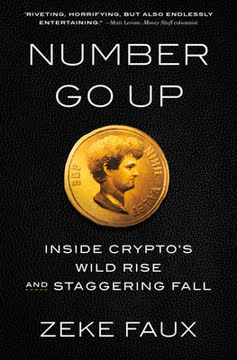
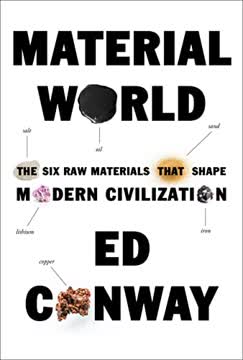
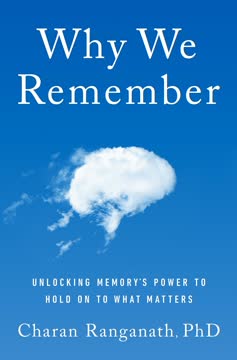

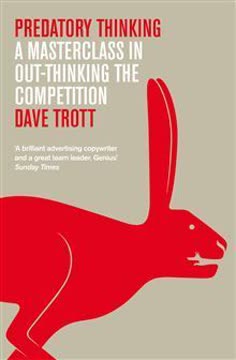


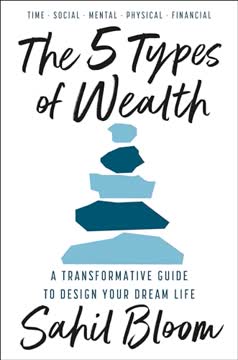
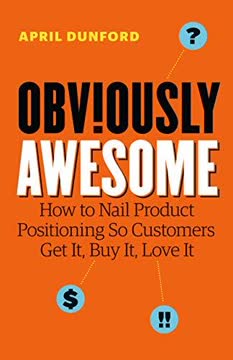
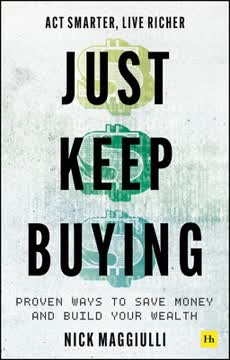
Download PDF
Download EPUB
.epub digital book format is ideal for reading ebooks on phones, tablets, and e-readers.
